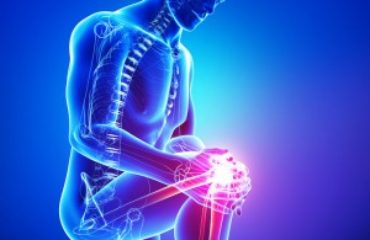At one time or another, most people in the world will experience some degree of back pain. In fact, according to the Global Burden of Disease 2010, low back pain is the leading cause of disability the world over. Back pain is also a very common reason for absence from work, which can result in loss of pay or productivity.
To discover the reasons for all of these back problems, it is beneficial to understand the anatomy of the back, including bone, muscle, and nervous system structures. Beginning with the skeletal system, the back contains one of the most important bone structures of the body, namely the spinal column. Composed of a series of vertebrae, the spinal column extends from the skull to  the tailbone, giving support to the trunk as well as housing the all-important spinal cord. Extending from the spinal column and wrapping around the trunk is the ribcage, and the bony structures at the rear of the shoulders are the large, flat scapulae. The back is also a place of great musculature, including the muscles bordering the spine as well as the latissimus dorsi which runs from shoulder to hip. Within the spinal column, the spinal cord contains long, large nerves running from the brain to the tailbone area, from which extend peripheral nerves served with communicating messages between the brain and the rest of the body.
the tailbone, giving support to the trunk as well as housing the all-important spinal cord. Extending from the spinal column and wrapping around the trunk is the ribcage, and the bony structures at the rear of the shoulders are the large, flat scapulae. The back is also a place of great musculature, including the muscles bordering the spine as well as the latissimus dorsi which runs from shoulder to hip. Within the spinal column, the spinal cord contains long, large nerves running from the brain to the tailbone area, from which extend peripheral nerves served with communicating messages between the brain and the rest of the body.
Common Causes of Pain
Pain in the back can be quite complex, resulting from anything from injury, to overuse, to degenerative conditions such as arthritis. Additionally, many people today are overweight or even obese, and the extra weight can take its toll on the back, causing pain and discomfort. While most back pain is a result of muscle strain, other issues include degenerative disc disease, stenosis, and sciatica. Trained orthopedic doctors are back pain experts, and they are best equipped to identify and treat back pain of all sorts.
Treatments & Medications
Depending on the cause of back pain, orthopedic doctors may recommend a variety of treatments, including but not limited to physical therapy, exercise, weight loss, spinal manipulation, or even surgery in certain situations. The Agency for Health Care Policy and Research recommends conservative treatment first, followed by more aggressive treatments if necessary. Surprisingly, something as seemingly benign as a day of inactivity or a bad night’s sleep can wreak havoc on the back, leaving pain in its wake. Besides staying active, those prone to back pain can take measures to prevent it by exercising, losing weight, maintaining good posture, and wearing comfortable shoes.
The back is one of the most important areas of the body when it comes to overall quality of life. A bad back can mean the  difference between working and staying home, being active or sedentary, and even being depressed or satisfied with the world at large. Anyone concerned about the health of this part of the body should consult a physician right away to avoid suffering any longer than is absolutely necessary.
difference between working and staying home, being active or sedentary, and even being depressed or satisfied with the world at large. Anyone concerned about the health of this part of the body should consult a physician right away to avoid suffering any longer than is absolutely necessary.
Read Also: Shoulder Instability Discussed by an Orthopedic Doctor in Scottsdale


